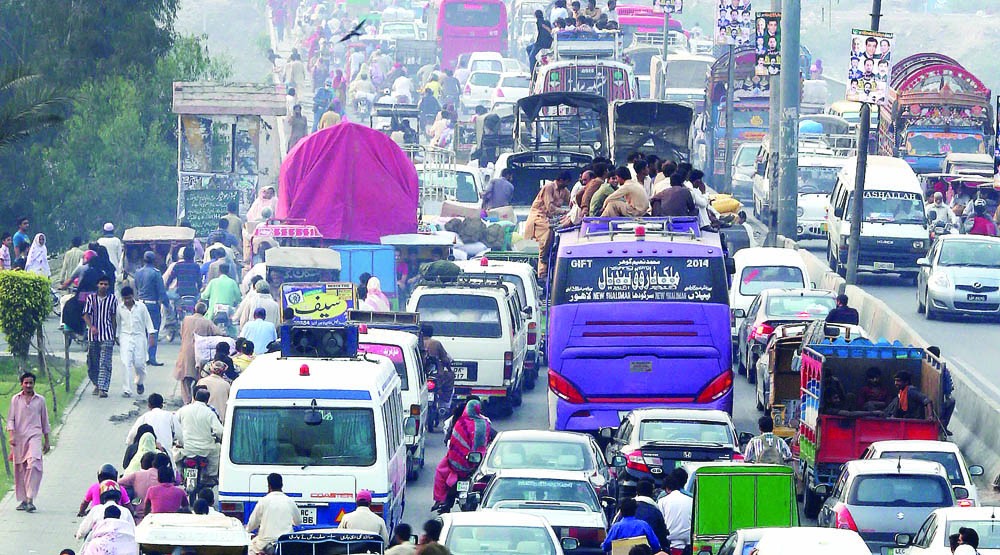

An array of underpasses and overheads may have given Lahore a new face, some of the city roads are still wedged with bad traffic gridlocks -- in rush hours and beyond. Shehr launches a series on the major bottlenecks in and around town.
With the closure of the traffic signals at Taxali, Azadi Chowk, Lorri Adda and Batti Chowk, long lines of vehicles that refuse to move are the order of the day at the Ravi Bridge.
The signals, which were removed because of the construction of the Azadi Chowk Flyover and the Metro Bus stations, would obviously break the speed of the vehicles and divide them before they reached the Ravi Bridge. Today, in the absence of these traffic signals, the vehicles moving at the speed of 60-70km per hour come to an abrupt halt when they get to the bridge.
The bridge has only two lanes for traffic, whereas the vehicles that converge here are coming from a six-lane road. The bridge, then, becomes a natural bottleneck as it cannot accommodate light, heavy and slow-moving vehicles at the same time.
All types of vehicles -- buses, cars, vans, carts and rickshaws -- ply on the bridge, thereby creating a huge mess.
Interestingly, even the Metro Bus, which has a separate lane throughout its 27-kilometre route inside the city, is made to move along with the regular vehicles and commercial passenger buses and vans coming down from Lorri Adda.
The passenger buses sometimes pick and/or drop the commuters and their luggage right on the bridge, blocking the already narrow space.
Mian Umair, a traffic warden, believes it does not work "because of the huge number of motorcycle-rickshaws that block the old Ravi Bridge."
Another traffic warden says that despite extra deployment of personnel, the bridge remains congested, because it is too narrow.
He also says that any VIP movement, usually heading off to Islamabad, adds to the traffic mess on the bridge.
Though the traffic police has given clear instructions to divert the slow-moving vehicles, particularly the motorcycle-rickshaws and carts, to the old Ravi Bridge, no one seems to comply.
A motorcycle-rickshaw driver says the old Ravi Bridge does not suit the drivers as well as the passengers. "If we take the old Ravi Bridge, we have to cover extra three kilometres to reach Shahdra from Lorri Adda or Minar-e-Pakistan. The passengers are not willing to pay more than Rs15 for Shahdra."
The roads on both sides of the Ravi Bridge are in a bad condition. They are littered with potholes. The motorists have to slow down or pull to a side in order to avoid these. The moment they apply brake, the vehicles behind will bump into each other.
There is an urgent need to re-construct the road. It has not been carpeted in a long time. The permanent solution may be to widen the bridge and create at least six lanes on each side of the road.
Popular perception is that the Azadi Chowk Flyover has added to the woes of the commuters on the Ravi Bridge.
"In place of the Azadi Chowk Flyover, there should have been an overhead bridge linking Azadi Chowk to Ravi Toll Plaza for heavy vehicles," says a traffic warden.
The Ravi Bridge is the main link for the traffic using GT Road to enter Lahore. Trucks and ordinary passenger buses use GT Road to avoid the Motorway fee. Besides, the vehicles coming from big and small cities like Islamabad, Rawalpindi, Gujrat and Gujranwala via GT Road enter Lahore through this Bridge. It is far too narrow for such a huge traffic.